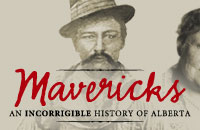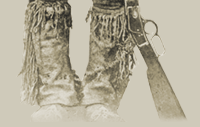 |

[ Project Plans | Essential
Questions | Knowledge Hunt | Glossary | Links ]
Letters from the Past…
Writing "Primary Source Letters" to Better Understand
the Lives of the Railway Mavericks
Introduction
Students need to gain an understanding of the Canadian people and
the story of how Canada developed into the country it is now. The
diversity of Canada's heritage and how the ways of life have
changed will be revealed through an examination of primary source
historical letters and then allowing students to write their own.
How did people communicate without phones or computers in the late
1800's? What was it like building a transcontinental railway?
What hardships were faced? What was life like for a Chinese railway
worker?
Project Explanation
In this project, students will develop an appreciation of the way
of life for people who lived in the late 1800's, and especially
for those who were part of the building of the Canadian Pacific
railway. Students will research and role-play one of the Mavericks
by writing a fictional primary source historical letter to their
wife, family, the company president, or even the Prime Minister
at the time, John A. MacDonald. As much knowledge and historical
facts will be incorporated into the letters as possible.
Alberta Social Studies Curriculum Unit Connections
Grade Four - Alberta: The Land, Histories and Stories
4.2 The Stories, Histories and People of Alberta
Grade Five - Canada: The Land, Histories and Stories
5.2 Histories and Stories of Ways of Life in Canada
5.3 Canada: Shaping an Identify
Grade Seven - Canada: Origins, Histories and Movement of People
7.2 Following Confederation: Canadian Expansions
Materials and Resources Needed
Procedures
Students will create a "primary source" letter to the
family of one of the Railroad Mavericks. It will be written from
the perspective of the Maverick, telling about their life and accomplishments
in relation to building the CPR. The students will put yourself
in the shoes of William Van Horne, William Pearce, or James Ma Poy,
or even create their own character who would have lived at the time
and been involved with the railroad in some way.
A primary source is a document, artifact, or photograph that is
original and was created as a firsthand or eyewitness account of
an event or life. Examples might include letters, diaries, postcards,
legal records, drawings, paintings, maps, or newspapers. The yare
an important source of history as they tell us much about the creators,
how they lived, and what they believed.
Using the Mavericks: An Incorrigible History of Alberta
site, the students will research as much information as possible
about the construction of the CPR and the life of one of the specific
Mavericks presented. This will provide the factual information they
will need to include in the letters they will write, as they become
that a person from that time period. They should also examine some
of the primary source letters on the Mavericks site or those
written by Father Constantine Scollen in the site above. This will
help the students to gain an understanding of what an authentic
letter from the time might look like, so that they might reproduce
the look and feel in their own letters.
Students may choose to write the letter as the Maverick themselves,
or as someone else who would have been near to them. It could be
as an assistant, a fellow labourer, a friend, a relative, a Chinese
railway worker, or another executive from the CPR. The letter they
write will tell as much as possible about their life. Where do they
live? What do they eat and drink? What do they do all day? What
other people are around? What do they do for fun? How do they get
around? Is their job dangerous? How do they feel about their life
and their job? Yet, it must be written and sound like a letter rather
than a research report.
The students must also decide upon a context for the letter. It
could be a writing home, to a friend, an update to Sir William Van
Horne or the Prime Minister John A. MacDonald, or even a complaint
about the working conditions or the Pacific Scandal of 1872-73.
They will also have to find an appropriate date, salutation, and
closing for their letter.
Once they have written a rough draft, the students will have to
creatively figure out how they would like to make the document look
aged. They could use fancy cursive script, try to use an ink calligraphy
pen, yellow the paper, tear, bend, fold or roughen up the paper
to make it look as authentic as possible.
Assessment and Evaluation
- Students and their teacher should develop their own rubric by
identifying evaluation criteria for the project that will match
their own learner outcomes. This allows students to understand
the expectations for their work and to have input into the ongoing
evaluation process.
- Students may evaluate themselves and their peers using their
project rubric, examining each other's project for historical
accuracy, detail, and creativity.
- After completing the project, students may talk or journal about
what they felt they did very positively, what they had difficulty
with, and how they would change how they would approach a similar
project in the future.
Ideas for Enriching this Project
- Students may use the Images Canada site to find and add
photographs that the historical person might have included with
the letter at the time it was sent.
 |



![]()

